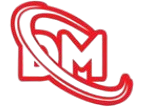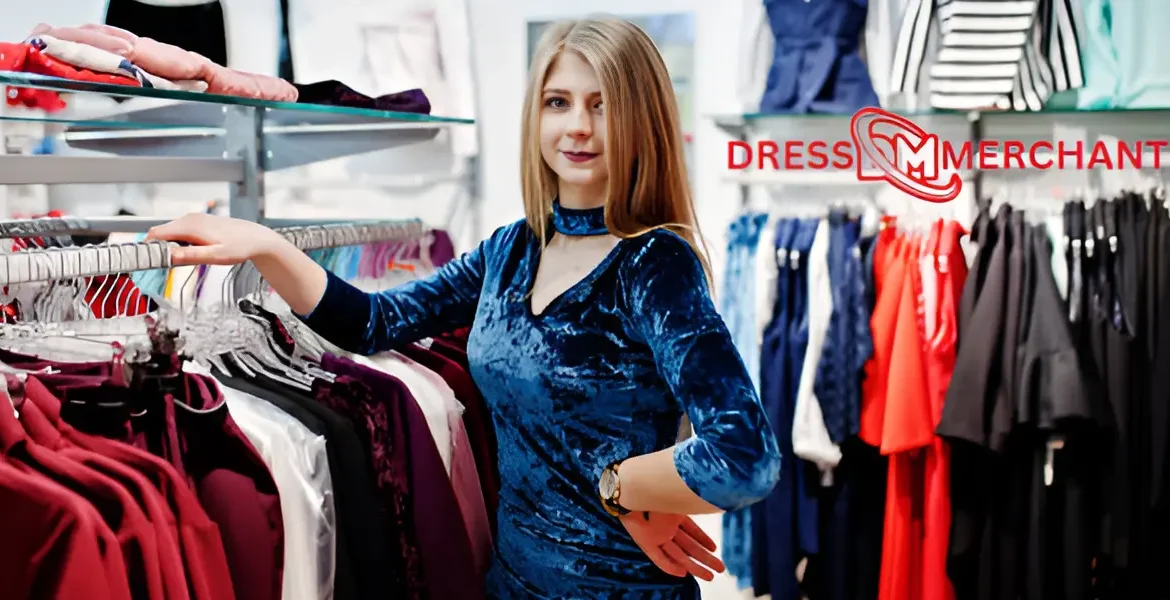Dress Merchant is the Best Apparel Sourcing Company In Bangladesh, specializing as a trusted buying agent for apparel and garments manufacturers and exporters. We streamline your sourcing process by connecting you with reliable factories, ensuring high-quality products, competitive pricing, and timely delivery. Partner with Dress Merchant to experience expert sourcing solutions tailored to your brand’s needs in Bangladesh’s dynamic apparel industry.
Thank you for reading this post, don't forget to subscribe!
1. Introduction to Apparel Sourcing in Bangladesh
1.1 Overview of the Apparel Industry in Bangladesh
Bangladesh has rapidly established itself as a dominant player in the global apparel industry, ranking consistently among the top garment exporters worldwide. The country’s textile and garment sector is a vital pillar of its economy, contributing significantly to GDP and employment. With over four decades of experience, Bangladesh has developed a robust manufacturing infrastructure that supports a broad spectrum of apparel products, ranging from affordable fast fashion to high-end premium clothing lines. This diversity allows Bangladesh to serve a wide variety of international markets, including Europe, North America, and Asia.
One of the key drivers behind Bangladesh’s success is its competitive labor cost, which remains significantly lower than many other apparel-producing nations. However, it is not just about cost — the country boasts a large, skilled, and increasingly well-trained workforce capable of producing high-quality garments. The government’s proactive support through policies, incentives, and infrastructure development further enhances the industry’s growth. Additionally, Bangladesh has invested in modernizing factories and adopting sustainable manufacturing practices to meet global standards. This combination of affordability, skill, and progressive regulation has made Bangladesh a reliable and attractive sourcing destination for global apparel brands.
1.2 Importance of Choosing the Right Apparel Sourcing Company
For any brand or retailer, selecting the right apparel sourcing company in Bangladesh is a critical decision that can significantly impact overall business success. A reliable sourcing partner acts as the bridge between the buyer’s vision and the realities of production. Beyond just facilitating orders, a top-tier sourcing company ensures that product quality meets international standards, compliance with labor and environmental regulations is maintained, and that deliveries happen on time.
A proficient sourcing company brings expertise in quality control processes, fabric selection, and efficient supply chain management. Their ability to communicate seamlessly with factories and buyers prevents misunderstandings that can lead to delays or defects. Moreover, they help brands innovate by advising on the latest textile trends and technological advancements in garment production. Choosing the wrong sourcing partner can lead to costly mistakes, ranging from production delays to reputational damage caused by unethical labor practices or substandard quality. Hence, the role of the sourcing company is pivotal in maintaining brand integrity and operational efficiency.
1.3 The Role of Sourcing Companies in Global Supply Chains
Apparel sourcing companies play an indispensable role as intermediaries within the complex global supply chains of the fashion industry. Their primary function is to connect international buyers with local manufacturers who have the capacity and capability to fulfill orders. This includes everything from sourcing raw materials like fabric and trims, overseeing the manufacturing process, to handling logistics and shipment.
Sourcing companies in Bangladesh possess an in-depth understanding of local market dynamics, including labor laws, factory compliance, and export regulations. They ensure that products meet buyer specifications and regulatory standards, which is essential for smooth cross-border trade. By managing risks such as production delays or quality issues, they provide buyers with a reliable and transparent supply chain experience. Their expertise also helps navigate challenges related to fluctuating raw material prices, compliance audits, and evolving global trade policies.
1.4 Bangladesh’s Competitive Edge in Apparel Sourcing
Bangladesh offers several unique competitive advantages that make it a preferred destination for apparel sourcing. The country’s production costs remain among the lowest globally, allowing brands to maintain cost-effectiveness without compromising on quality. In addition to affordability, Bangladesh benefits from access to a wide range of raw materials, including locally produced yarns and fabrics, which streamlines the supply chain and reduces lead times.
A strong focus on compliance and sustainability has also elevated Bangladesh’s reputation. Many factories adhere to international labor standards and environmental certifications, providing reassurance to global buyers concerned about ethical sourcing. Furthermore, Bangladesh’s strategic geographic location—with close proximity to major ports like Chittagong—facilitates quicker shipping and efficient logistics management. This accessibility helps brands reduce inventory holding times and respond swiftly to market demands.
Together, these factors create a compelling value proposition for apparel sourcing in Bangladesh. Its combination of cost-efficiency, quality manufacturing, ethical practices, and strategic location ensures that it remains a leading global hub in the competitive apparel sourcing landscape.
2. Key Services Provided by Apparel Sourcing Companies
2.1 Product Development and Design Support
Leading apparel sourcing companies offer extensive product development and design support that goes far beyond basic sourcing. Their teams of experienced designers and technical experts collaborate closely with brands to bring concepts to life, ensuring that the final garment aligns with current market trends and consumer preferences. This support typically includes initial design consultation where ideas are refined to balance creativity with manufacturability. The companies assist in selecting appropriate materials and trims that enhance both aesthetics and functionality.
A crucial part of this service is prototype creation, where the sourcing company works with factories to produce sample garments for evaluation. These prototypes allow brands to assess the fit, fabric performance, and overall look before mass production begins. Sampling also helps identify potential production challenges early on, enabling timely adjustments. By facilitating multiple rounds of sampling, sourcing companies help optimize the product to achieve the desired quality while controlling production costs.
Furthermore, these firms stay updated on the latest innovations in textile technologies, sustainable materials, and manufacturing techniques. This expertise enables them to advise clients on how to incorporate eco-friendly fabrics or cost-effective production methods, thus adding value beyond traditional sourcing functions. Their holistic approach to product development ultimately supports brands in launching collections that resonate with customers and perform well in the competitive apparel market.
2.2 Vendor and Factory Selection
One of the core competencies of apparel sourcing companies is their ability to identify and select the best vendors and factories suited to each client’s unique needs. Over the years, sourcing firms build and maintain a robust network of pre-qualified manufacturers across different regions, each specializing in various garment categories such as knitwear, woven apparel, outerwear, or technical sportswear.
When a buyer approaches with specific requirements, the sourcing company conducts a thorough assessment to match those needs with the right factory. This involves evaluating factories based on factors like production capacity, machinery capabilities, labor skill level, compliance with labor and environmental standards, and past performance records. The sourcing company also considers the factory’s ability to meet delivery deadlines and price targets, ensuring a good balance between cost efficiency and quality.
By acting as a bridge between buyers and factories, sourcing companies reduce the risks associated with working directly with unknown manufacturers, such as delays, subpar quality, or non-compliance issues. Their vendor management expertise streamlines communication, contract negotiations, and ongoing monitoring to maintain a smooth production process. This strategic factory selection process ultimately contributes to delivering consistent, high-quality apparel products that meet client expectations.
2.3 Quality Control and Inspection Services
Maintaining rigorous quality control standards is vital for apparel brands to protect their reputation and customer loyalty. Apparel sourcing companies prioritize this by implementing comprehensive quality assurance and inspection protocols throughout the production cycle. They deploy skilled quality inspectors who visit factories at various production stages—from raw material inspection to in-line checks and final garment evaluation.
These inspectors assess critical quality parameters such as fabric texture and colorfastness, stitching strength and neatness, garment fit and measurements, and finishing details like buttons, zippers, and labels. Advanced testing tools and methods, including lab testing for fabric durability and chemical compliance, are often utilized to ensure products adhere to both international standards and brand-specific criteria.
By conducting systematic inspections before shipment, sourcing firms help identify and rectify defects early, preventing costly returns or customer complaints. Detailed inspection reports are shared with clients, providing transparency and confidence in the final product quality. This proactive quality control approach minimizes production risks and ensures the delivery of apparel that matches the buyer’s quality expectations consistently.
2.4 Logistics and Supply Chain Management
Efficient logistics and supply chain management are essential services offered by apparel sourcing companies to optimize delivery timelines and reduce operational costs. These firms manage the complex coordination required to move products seamlessly from factory floors to warehouses and ultimately to retail outlets or distribution centers.
Sourcing companies organize transportation solutions tailored to client needs, whether by sea, air, or land, taking into account factors like cost, speed, and product sensitivity. They handle customs clearance procedures, ensuring all regulatory documentation is accurate and timely to avoid shipment delays. Warehousing and inventory management services may also be provided, offering secure storage options and order fulfillment support.
By integrating these logistics functions, sourcing companies provide end-to-end supply chain visibility and control. This holistic management reduces the risks of damage, loss, or misplacement during transit, while improving delivery reliability. Clients benefit from streamlined operations and can focus more on their core business activities, knowing their apparel shipments are in expert hands.
3. Criteria for Selecting the Best Apparel Sourcing Company
Choosing the right apparel sourcing company is crucial for the success and sustainability of any fashion brand. With countless options available globally, brands must carefully evaluate potential partners based on specific criteria to ensure smooth operations, high-quality output, and ethical standards. Below are some essential factors to consider when selecting the best apparel sourcing company.
3.1 Experience and Industry Reputation
One of the foremost criteria to evaluate is the company’s experience and standing within the apparel industry. Established sourcing companies typically have a well-documented history of successfully managing various types of orders across multiple product categories. Their portfolio of clients, especially well-known brands, is often a testament to their reliability and professionalism.
Experienced sourcing companies are adept at handling challenges that arise during production, such as material shortages, quality inconsistencies, or delivery delays. Their industry knowledge allows them to foresee potential bottlenecks and proactively implement solutions, minimizing risks for their clients. Additionally, long-term presence in the market often indicates strong supplier networks and trusted factory partnerships, which are critical for maintaining consistent quality and competitive pricing.
A sourcing company’s reputation can be gauged through customer testimonials, case studies, and industry awards. Brands should conduct thorough due diligence by seeking feedback from previous clients or industry experts to ensure the company has a strong track record for meeting deadlines and maintaining product standards.
3.2 Ethical Compliance and Sustainability Practices
In today’s fashion landscape, ethical sourcing and sustainability have become non-negotiable priorities for many brands and consumers alike. Leading apparel sourcing companies prioritize adherence to labor laws, workplace safety regulations, and fair wage policies to ensure that all workers in the supply chain are treated with dignity and respect.
Sustainable sourcing also involves minimizing environmental impact by selecting factories that follow eco-friendly practices, such as waste reduction, water conservation, and the use of sustainable raw materials. The best companies often conduct regular audits and certifications to verify that their supply chain partners comply with these standards.
Brands looking for long-term success should partner with sourcing companies committed to transparency in their sustainability initiatives. Such partners help reinforce brand values and meet the increasing consumer demand for ethically produced apparel.
3.3 Transparency and Communication Efficiency
Effective communication is a cornerstone of successful apparel sourcing partnerships. The best sourcing companies maintain transparent communication channels with their clients throughout the sourcing process, from initial material procurement to final shipment.
This transparency typically involves providing real-time updates on order status, quality inspections, and shipment tracking. Detailed progress reports help brands stay informed and make timely decisions to avoid delays or defects.
Moreover, efficient communication means responsive customer support that promptly addresses questions or issues. Quick resolution of problems, such as changes in order specifications or unforeseen production challenges, depends on seamless collaboration between the sourcing company and the brand.
3.4 Technological Integration and Innovation
In an increasingly digital world, sourcing companies that embrace technology have a competitive advantage. Advanced digital tools enable accurate order tracking, quality control analytics, and supply chain optimization, resulting in higher efficiency and reduced errors.
Many top apparel sourcing companies use proprietary platforms or integrate with clients’ systems to provide a centralized dashboard for monitoring every stage of production. This technological integration enhances visibility, helping brands identify potential risks early and make data-driven decisions.
Innovation also plays a key role in adapting to changing market demands. Companies that invest in technology are better equipped to manage complex orders, optimize logistics, and deliver products faster without compromising quality.
4. Understanding the Manufacturing Landscape in Bangladesh
4.1 Types of Apparel Manufacturing Units
Bangladesh’s apparel manufacturing sector is remarkably diverse, encompassing a wide range of production facilities designed to meet the demands of a global market. The country is home to large-scale export-oriented factories, many of which are vertically integrated and capable of handling everything from fabric sourcing to finished garment packaging. These factories typically serve major international brands and retailers, offering high-volume production with stringent quality control processes.
In addition to these giants, there is a thriving segment of small to medium-sized enterprises (SMEs) that cater to niche markets or produce smaller order quantities. These units often provide more flexibility and quicker turnaround times, making them attractive to emerging brands or those testing new product lines. Specialized manufacturing units are also prevalent, focusing on specific categories such as denim, knitwear, technical fabrics, and activewear. These facilities often incorporate advanced machinery and innovative techniques tailored to their product specialization, enabling Bangladesh to serve diverse apparel segments effectively.
This layered manufacturing structure not only supports a wide range of order sizes and product types but also contributes to the country’s resilience in the global supply chain. Buyers can choose from budget-friendly options to premium, technically complex garments, all within the same sourcing ecosystem.
4.2 Workforce Skills and Training Programs
One of Bangladesh’s strongest assets is its large, skilled workforce, which forms the backbone of its apparel industry. The country has invested significantly in developing a pool of garment workers trained in various production techniques, including cutting, sewing, finishing, and quality inspection. Many workers have years of experience, and this expertise translates into consistent garment quality and production efficiency.
To keep pace with evolving industry standards and technological advancements, many sourcing companies collaborate with local factories to implement continuous training programs. These initiatives cover a broad spectrum of topics, from health and safety compliance to lean manufacturing principles and sustainable production methods. Training programs also focus on soft skills such as teamwork, communication, and problem-solving, which enhance overall operational effectiveness.
Moreover, international buyers increasingly require factories to meet specific social and environmental standards. As a result, workforce training now often includes modules on ethical labor practices, workplace safety, and environmental responsibility, further improving factory compliance and global reputation.
4.3 Challenges in the Local Manufacturing Environment
Despite the many strengths of Bangladesh’s apparel manufacturing sector, several challenges persist. Infrastructure limitations remain a concern, including occasional power shortages, transportation bottlenecks, and port congestion, all of which can impact production timelines and logistics costs. Compliance audits related to labor laws, safety regulations, and environmental standards require continuous attention and investment, especially as global brands demand greater transparency and accountability.
Fluctuations in raw material prices, especially for cotton and synthetic fibers, add another layer of complexity to cost management. These price changes can affect profit margins and sometimes lead to delays in order fulfillment.
To address these challenges, leading sourcing companies adopt proactive risk management strategies. This includes contingency planning, diversifying supplier networks, and investing in technology to improve supply chain visibility. Such approaches help mitigate disruptions and maintain steady production flow despite external pressures.
4.4 Government Policies and Industry Incentives
The Bangladeshi government plays an active role in fostering growth within the apparel sector through various supportive policies and incentives. Export subsidies and tax benefits provide financial relief to manufacturers, enabling them to compete more effectively in global markets. The government has also established several industrial zones and garment parks equipped with modern infrastructure, designed to streamline operations and attract foreign investment.
Additionally, policies encouraging the adoption of green manufacturing and sustainable practices align with global trends and buyer expectations, further enhancing Bangladesh’s appeal as a sourcing destination.
Sourcing companies leverage these government-backed incentives to expand production capacity, invest in new technologies, and reduce operational costs. This collaborative ecosystem between the public and private sectors strengthens Bangladesh’s position as a leading apparel manufacturing hub on the world stage.
5. Quality Assurance and Control Measures
Quality assurance and control are critical components in the garment sourcing process. Ensuring that every product meets the highest standards not only safeguards the brand’s reputation but also guarantees customer satisfaction. The sourcing company employs a multi-layered approach to quality control, from testing raw materials to final product inspections, supported by recognized third-party certifications. This section elaborates on the key procedures and measures involved.
5.1 Fabric and Material Testing Procedures
The foundation of quality garments begins with the selection and testing of raw materials. The sourcing company implements comprehensive testing protocols to verify that all fabrics and accessories comply with predefined specifications. These tests include tensile strength analysis, which measures the durability and resistance of the fabric to stretching or breaking during use. Colorfastness tests assess the fabric’s ability to retain its color without bleeding or fading after exposure to washing, rubbing, or sunlight, which is essential for maintaining garment appearance over time. Additionally, shrinkage tests determine the dimensional stability of the fabric after washing, preventing unexpected size changes that could affect fit.
By conducting these rigorous tests early in the production cycle, the company significantly reduces the risk of defects that may arise from substandard materials. These proactive measures also help in selecting the best suppliers who consistently provide high-quality fabrics, ensuring reliability and consistency for bulk orders.
5.2 In-Process Quality Monitoring
Quality assurance does not stop at material testing; it continues throughout the manufacturing process. In-process quality monitoring is crucial to identifying and addressing issues as soon as they occur. Skilled quality inspectors perform regular checks at critical stages such as fabric cutting, sewing, and finishing. During the cutting phase, they ensure accuracy in pattern alignment and fabric utilization, minimizing waste and ensuring garment components fit together perfectly.
During sewing, inspectors focus on stitch density, seam strength, and overall construction quality, which are essential for the garment’s durability and aesthetic appeal. The finishing stage involves checking trims, buttons, zippers, and other details to confirm they are securely attached and functioning properly. This continuous surveillance allows for immediate correction of defects, preventing large-scale production of faulty products.
5.3 Final Product Inspection Standards
Before garments leave the factory, they undergo a comprehensive final inspection to ensure they meet buyer specifications and industry regulations. This inspection covers various aspects including stitching quality, garment fit, size accuracy, labeling compliance, and packaging standards. Inspectors use checklists aligned with buyer requirements to verify each product’s conformity.
Stitching is examined for uniformity, loose threads, and missed stitches, while fit tests ensure the garments match the approved samples and sizing charts. Proper labeling with care instructions, fabric content, and country of origin is verified to comply with legal and buyer mandates. Packaging is also scrutinized to confirm that it protects the product during transportation and presents it attractively to the end customer.
5.4 Third-Party Certifications and Audits
To reinforce the credibility of quality assurance processes, many sourcing companies facilitate independent third-party audits and certifications. Certifications such as ISO (International Organization for Standardization) ensure that factories adhere to international quality management standards. WRAP (Worldwide Responsible Accredited Production) certification verifies that factories operate under ethical labor practices, safety, and environmental guidelines. OEKO-TEX certification confirms that textiles are free from harmful substances, providing assurance on product safety.
These third-party validations not only build trust between the sourcing company and global brands but also enhance transparency and accountability in the supply chain. Brands partnering with sourcing companies that maintain these certifications can confidently promote their products as ethically made and quality assured, meeting increasing consumer demands for responsible fashion.
6. Cost Management and Pricing Strategies
Effective cost management and strategic pricing are critical components that determine the success of any sourcing operation. Leading sourcing companies recognize that transparent communication and proactive management of costs not only build trust with buyers but also optimize profitability. Below, we explore several essential aspects of cost management and pricing strategies that sourcing companies deploy to deliver maximum value.
6.1 Transparent Cost Breakdown and Pricing Models
One of the foundational practices among top sourcing firms is providing buyers with a clear and detailed cost breakdown. This includes a comprehensive quotation that delineates all elements contributing to the final price—raw materials, labor charges, factory overheads, quality control expenses, and logistics costs. Such transparency empowers buyers by giving them full visibility into where their money is being spent and helps identify potential areas for cost optimization. Additionally, sourcing companies often offer different pricing models, such as fixed pricing, cost-plus pricing, or volume-based discounts, tailored to fit the buyer’s specific needs and risk appetite. This approach facilitates better budgeting and financial planning, making the procurement process smoother and more predictable.
6.2 Negotiation Tactics with Manufacturers
Sourcing companies bring invaluable negotiation expertise to the table, leveraging their deep industry knowledge and established relationships with manufacturers. They use strategic tactics to secure favorable pricing and payment terms without compromising on product quality. These tactics include bundling orders for higher volume discounts, negotiating extended payment terms to improve cash flow, and securing agreements that lock in prices despite market fluctuations. Experienced sourcing agents understand the cultural nuances and negotiation styles of different manufacturing regions, which enhances their ability to achieve mutually beneficial deals. Ultimately, this negotiation prowess translates into significant cost savings and improved supplier reliability for buyers.
6.3 Impact of Global Market Trends on Pricing
Global economic factors heavily influence sourcing costs and pricing structures. Fluctuations in currency exchange rates can either inflate or reduce expenses depending on the buyer’s currency relative to the supplier’s. Similarly, the availability and pricing of raw materials—such as cotton, polyester, or metals—are subject to global supply chain disruptions, weather conditions, and geopolitical events. Trade policies, tariffs, and import/export restrictions also play a crucial role in determining final costs. Leading sourcing companies continuously monitor these market dynamics to anticipate pricing changes and advise buyers accordingly. Their ability to react swiftly to these trends helps maintain competitive pricing and minimizes unexpected cost escalations.
6.4 Value-Added Services to Optimize Costs
Beyond simply sourcing and production, many companies enhance cost efficiency through value-added services. These services may include customized packaging solutions that reduce damage and improve shelf appeal, inventory management systems that minimize storage costs and avoid overstocking, and shipping consolidation strategies that combine multiple shipments to reduce freight expenses. By integrating these additional services, sourcing firms provide a holistic approach to cost management, ultimately lowering the total cost of ownership for buyers. Such comprehensive support not only optimizes operational expenses but also contributes to faster turnaround times and improved supply chain agility.
7. Sustainability and Ethical Manufacturing Practices
Sustainability and ethical manufacturing have become essential pillars in today’s garment sourcing industry. As consumers grow more environmentally conscious and socially responsible, sourcing companies must prioritize these practices to remain competitive and trustworthy. By integrating sustainable initiatives and upholding ethical labor standards, these companies contribute positively to the environment, society, and the global fashion ecosystem.
7.1 Environmental Impact Reduction Initiatives
Leading sourcing companies actively seek partnerships with factories and manufacturers committed to minimizing their environmental footprint. This commitment often involves adopting eco-friendly processes designed to reduce resource consumption and waste. Water recycling technologies are increasingly employed in dyeing and finishing processes, drastically lowering water use and reducing contamination of local water bodies. Alongside this, the management of chemicals in manufacturing has become more stringent, with companies opting for non-toxic and biodegradable alternatives that ensure minimal harm to the ecosystem.
Energy efficiency is another critical focus area. Factories equipped with energy-saving technologies, such as LED lighting, solar panels, and advanced machinery that requires less electricity, help cut down greenhouse gas emissions significantly. By choosing partners with these capabilities, sourcing companies not only support sustainable production but also comply with stricter international environmental regulations, reinforcing their market reputation and consumer trust.
7.2 Fair Labor Practices and Worker Welfare
Ethical manufacturing goes beyond environmental concerns to embrace the social dimension of sustainability. Responsible sourcing companies place a strong emphasis on ensuring fair labor practices in all stages of production. This includes guaranteeing safe and hygienic working conditions, which protect workers’ health and well-being. Regular inspections and compliance checks help enforce safety standards and mitigate occupational hazards.
Equally important is the commitment to reasonable working hours, avoiding excessive overtime that can lead to worker burnout. Fair wages, reflective of local living costs and legal requirements, are fundamental to supporting worker dignity and economic stability. Companies that champion these values often see benefits such as improved worker morale, higher productivity, and reduced employee turnover, creating a positive and sustainable production environment.
7.3 Use of Sustainable Materials and Innovation
Responding to the growing demand for eco-conscious products, sourcing companies are increasingly incorporating sustainable raw materials into their supply chains. Organic cotton, grown without synthetic pesticides or fertilizers, is favored for its reduced environmental impact and superior biodegradability. Recycled fibers, sourced from post-consumer or industrial waste, help conserve natural resources and divert waste from landfills.
Innovation in sustainable trims and accessories is also gaining momentum. Biodegradable buttons, recycled polyester zippers, and eco-friendly dyes are examples of materials that reduce the overall environmental footprint of garments. These advances allow brands to create fashionable, high-quality products that meet the expectations of environmentally aware consumers while supporting circular economy principles.
7.4 Certifications Supporting Ethical Manufacturing
To validate and communicate their commitment to sustainability, many sourcing companies pursue internationally recognized certifications. ISO 14001 certification, focusing on environmental management systems, assures clients that factories actively monitor and improve their environmental performance. Fair Trade certification guarantees that products are made under equitable labor conditions, empowering workers and communities.
The Global Organic Textile Standard (GOTS) is another critical certification that verifies organic status and ensures rigorous environmental and social criteria throughout the textile supply chain. These certifications serve as trusted benchmarks for buyers seeking ethically produced goods and help sourcing companies differentiate themselves in a competitive market by demonstrating transparency and responsibility.
8. Technology Integration in Apparel Sourcing
In today’s fast-paced and highly competitive apparel industry, technology integration has become a crucial factor in streamlining sourcing processes, enhancing efficiency, and improving transparency between manufacturers and buyers. The adoption of advanced digital tools and automated systems is transforming how apparel sourcing companies operate, enabling them to meet growing consumer demands with greater accuracy and speed. This section explores key technological innovations that are reshaping the apparel sourcing landscape.
8.1 Digital Platforms for Order Management
Modern sourcing companies increasingly rely on sophisticated Enterprise Resource Planning (ERP) systems and cloud-based digital platforms to manage orders effectively. These platforms offer buyers real-time visibility into the entire production process — from raw material procurement to final shipment. Buyers can track order status updates, monitor production milestones, and access shipment tracking information all within a centralized interface.
This transparency not only fosters trust but also helps in making timely decisions and adjustments if any delays or issues arise. Additionally, these platforms facilitate seamless communication between different stakeholders, including designers, manufacturers, and logistics providers, thereby reducing miscommunication and enhancing overall workflow efficiency.
8.2 Automation in Production and Quality Control
Automation technologies are revolutionizing production lines by enhancing precision and consistency. AI-powered inspection tools are being used to detect defects in fabrics and finished garments at an early stage, significantly reducing human error and waste. Similarly, robotic sewing machines and automated cutting systems improve the speed and accuracy of manufacturing, leading to shorter lead times and higher product quality.
These automated solutions enable manufacturers to maintain stringent quality control standards, ensuring that each product meets the buyer’s specifications. Furthermore, automation helps optimize labor costs and enables scalability during peak demand periods without compromising on quality.
8.3 Data Analytics for Supply Chain Optimization
The integration of advanced data analytics plays a vital role in optimizing supply chain operations within apparel sourcing. By analyzing historical sales data, market trends, and seasonal fluctuations, sourcing companies can accurately forecast demand, thereby reducing the risk of overproduction or stockouts. Data-driven inventory management allows for optimal stock levels, minimizing storage costs while ensuring availability.
Additionally, predictive analytics help identify potential bottlenecks and disruptions in the supply chain, allowing companies to take proactive measures such as adjusting lead times, rerouting shipments, or sourcing alternative materials. This level of insight enhances operational agility, resulting in a more resilient and responsive supply chain.
8.4 Virtual Sampling and 3D Design Tools
Traditional sampling methods often involve multiple iterations of physical samples, which can be time-consuming and costly. Virtual sampling and 3D design technologies are revolutionizing this aspect by enabling designers and buyers to create and visualize digital prototypes before physical production begins. Using 3D modeling software, buyers can examine garment details, fabric textures, and fit from various angles in a virtual environment.
This reduces the number of physical samples needed, accelerates decision-making, and conserves valuable resources. Moreover, these digital tools facilitate better collaboration between design teams and manufacturers, ensuring alignment on product specifications and reducing the likelihood of costly revisions later in the production cycle.
9. Global Trends Impacting Apparel Sourcing in Bangladesh
The apparel sourcing landscape in Bangladesh is continuously shaped by evolving global trends that affect how brands and manufacturers operate. Understanding these trends is essential for stakeholders in the garment industry to remain competitive and responsive to market demands. The following sub-sections explore some of the most significant trends currently influencing apparel sourcing in Bangladesh.
9.1 Shift Towards Fast Fashion and Quick Turnaround
One of the most prominent trends impacting apparel sourcing is the global shift towards fast fashion. Modern consumers increasingly seek the latest styles and trends, often driven by social media and celebrity influence, which change rapidly. This dynamic has placed immense pressure on brands and sourcing partners to shorten production lead times and increase supply chain agility.
Bangladesh’s garment manufacturers are adapting by investing in more efficient production processes, upgrading machinery, and improving workforce skills. The ability to quickly respond to design changes and deliver quality products in a shorter timeframe has become a key competitive advantage. This fast turnaround model demands not only operational efficiency but also a strong coordination across design, production, and logistics stages, ensuring that quality is not compromised despite accelerated timelines.
9.2 Growing Demand for Customization and Small Batch Production
Alongside fast fashion, the demand for personalized apparel and small batch production is growing. Consumers are moving away from mass-produced items towards unique, customizable products that reflect individual styles. This trend requires sourcing partners to be highly flexible in their manufacturing capabilities. Factories in Bangladesh are increasingly embracing technologies and processes that enable efficient production of smaller order quantities without significantly raising costs.
Digital printing, automated cutting, and modular manufacturing units are examples of innovations supporting this trend. Brands benefit from this flexibility by being able to test new styles in limited quantities before committing to larger runs, reducing inventory risks and waste. The ability to efficiently produce customized apparel also opens new market segments and enhances customer satisfaction.
9.3 Impact of Trade Policies and Tariffs
Trade policies, tariffs, and geopolitical factors play a crucial role in shaping sourcing decisions. Bangladesh’s garment exporters are keenly aware of the implications of trade agreements such as the European Union’s Everything But Arms (EBA) scheme and the Generalized System of Preferences (GSP) offered by various countries. Changes in tariffs or trade restrictions can significantly affect the cost competitiveness of sourcing from Bangladesh.
As global trade dynamics evolve, companies continuously monitor developments to optimize their supply chains and mitigate risks. Diversifying sourcing locations and maintaining compliance with international trade regulations are strategies used to navigate uncertainties. This vigilance ensures that Bangladesh remains an attractive sourcing destination despite shifting global trade landscapes.
9.4 Rise of Ethical Consumerism
In recent years, ethical consumerism has emerged as a powerful trend influencing apparel sourcing. Consumers are increasingly concerned about the environmental and social impact of the products they purchase. This shift has compelled sourcing companies in Bangladesh to adopt more transparent and responsible practices. Efforts to enhance supply chain traceability, ensure fair labor conditions, and reduce environmental footprints are becoming standard expectations.
Many manufacturers are investing in certifications such as Fair Trade, WRAP (Worldwide Responsible Accredited Production), and ISO environmental standards to demonstrate their commitment. Brands leveraging these ethical sourcing practices can appeal to conscious consumers, building stronger loyalty and brand reputation in competitive markets.
10. Why Choose Us as Your Apparel Sourcing Partner in Bangladesh
10.1 Proven Track Record of Excellence
Our company stands out in the competitive apparel sourcing industry due to our years of unwavering commitment to excellence. Over time, we have built and maintained successful collaborations with numerous renowned global fashion brands. These partnerships reflect our ability to consistently deliver high-quality apparel products that meet and often exceed client expectations. Our expertise spans a wide range of apparel categories, from casual wear to high-end fashion, allowing us to cater to diverse market demands with precision and reliability.
Our dedication to excellence is not limited to product quality alone. We place a strong emphasis on delivering exceptional service, ensuring that every project is managed with professionalism and attention to detail. Whether it’s meeting tight deadlines, adapting to changing fashion trends, or managing complex order specifications, our team has the experience and agility to handle it all. This proven track record gives our clients confidence that they are partnering with a sourcing agent who understands the nuances of the apparel industry and is capable of driving success at every stage.
10.2 Extensive Network of Trusted Manufacturers
One of our greatest strengths lies in our extensive and carefully curated network of trusted manufacturers across Bangladesh. We have developed strong, long-term relationships with certified factories that uphold stringent quality standards and ethical labor practices. This network enables us to offer clients a broad spectrum of apparel products, from knitwear and woven garments to specialized technical fabrics and accessories.
Our partnerships cover manufacturers of various production capacities, ensuring flexibility whether you require small batch sampling or large-scale mass production. By working closely with these factories, we can match your specific product requirements, budget, and timeline with the most suitable production partner. This approach not only ensures product excellence but also optimizes cost efficiency and delivery speed. Clients benefit from having a single, reliable point of contact who can coordinate and oversee production seamlessly.
10.3 Commitment to Quality, Compliance, and Sustainability
In today’s fashion industry, quality and compliance are non-negotiable pillars of responsible sourcing. We are deeply committed to maintaining rigorous quality control procedures throughout every stage of production. Beyond quality, we emphasize full compliance with local and international labor laws, workplace safety regulations, and environmental standards.
Our dedication to sustainability is reflected in our support for factories that adopt eco-friendly manufacturing processes, such as reducing water usage, minimizing waste, and utilizing sustainable raw materials. We understand that sustainability is increasingly important to brands and consumers alike, and we strive to align our sourcing practices with your corporate social responsibility goals. Choosing us means partnering with a sourcing agent who prioritizes ethical production and long-term environmental stewardship.
10.4 Dedicated Customer Support and Transparent Processes
Our client-centric philosophy ensures that you receive dedicated support throughout the entire sourcing journey. We believe transparency and communication are key to building trust and ensuring project success. From initial inquiry to final delivery, our team maintains open and regular communication channels, providing you with timely updates, detailed production reports, and proactive solutions to any challenges that arise.
We understand that apparel sourcing can be complex and involve many moving parts. Our transparent processes are designed to give you peace of mind, knowing exactly where your orders stand at any given time. Our customer support team is readily available to answer questions, address concerns, and adapt plans as needed. This level of service guarantees a smooth and hassle-free experience, making us the preferred sourcing partner for businesses looking for reliability and professionalism in Bangladesh.
Conclusion: Best Apparel Sourcing Company In Bangladesh
A garments buying house specializing in knitwear plays an essential role in the global apparel supply chain by combining industry expertise, quality control, and strategic sourcing tailored specifically for knitwear products. Their in-depth knowledge of knit fabric technology, production processes, and market trends allows them to deliver superior garments that meet both buyer expectations and end-consumer demands.
By partnering with such specialized buying houses, brands and retailers benefit from streamlined operations, reduced risks, and enhanced product innovation. This partnership not only ensures high-quality knitwear but also supports sustainable practices and cost-effective solutions.
In an increasingly competitive and fast-paced market, a knitwear-focused garments buying house offers the strategic advantage necessary to stay ahead—ensuring consistent excellence, timely delivery, and long-term growth. Choosing the right buying house is, therefore, a critical step toward achieving success in the knitwear segment of the fashion industry.













